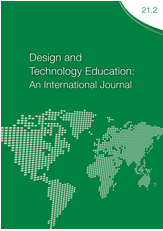Examining Technological Knowledge and Reasoning in Icelandic and Finnish Comprehensive Schools
Keywords:
craft and design education, technological reasoning, technical literacyAbstract
This research was undertaken in Finnish and Icelandic schools during the years 2013-14, in order to explore students’ technological knowledge and reasoning at the ages of eleven and thirteen. The research considered the congruence between students’ undertakings within Craft and Design education in the national curriculum and their ability to understand technological concepts. Data was collected using a questionnaire distributed to seven elementary schools and is highlighted with the researchers’ reviews of the national curricula. The Icelandic part of the research was undertaken with 277 students and Finnish sample consisted from 317 participants. Technological knowledge and reasoning was measured with a questionnaire regarding mechanical systems connected with simple physical phenomena. The results highlighted that students should have been more familiar with the content of the survey as a result of their Design and Craft studies and the use of textbooks in other subjects, such as physics. We expected that there is more transfer effect between the content of curriculum and the results in technological knowledge and reasoning. In addition, some differences between boys and girls were found. This is explained by boys and girls different interests and obviously this has an impact on girls’ motivation for learning about technology.
Downloads
Published
How to Cite
Issue
Section
License

This work is licensed under a Creative Commons Attribution 4.0 International License.
This work is licensed under a Creative Commons Attribution 4.0 International License.
Authors who publish with this journal agree to the following terms:
Authors retain copyright and grant the journal right of first publication with the work simultaneously licensed under a Creative Commons Attribution License that allows others to share the work with an acknowledgement of the work's authorship and initial publication in this journal.
Authors are able to enter into separate, additional contractual arrangements for the non-exclusive distribution of the journal's published version of the work (e.g., post it to an institutional repository or publish it in a book), with an acknowledgement of its initial publication in this journal.


